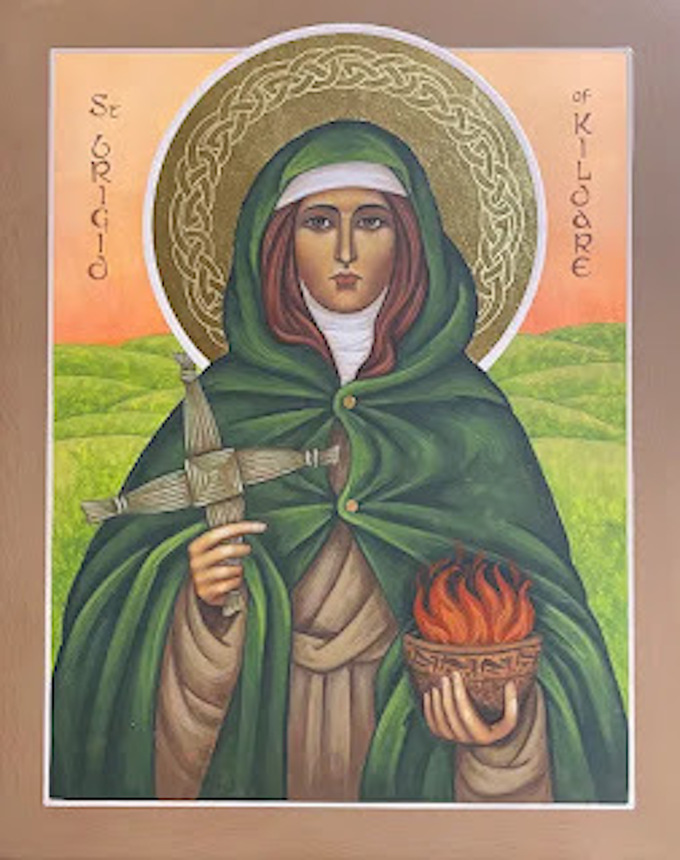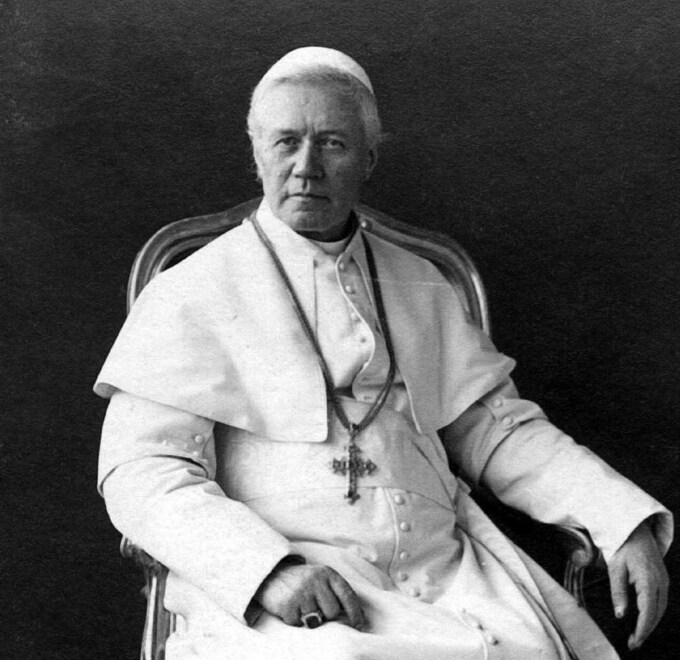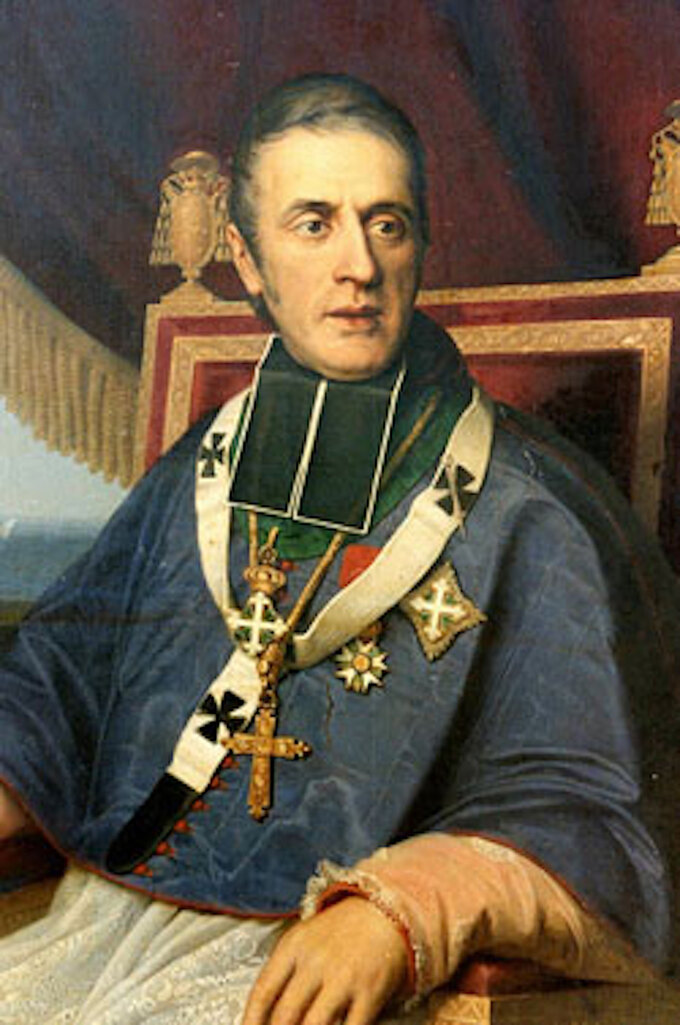Our History
During the 1960s Fr JP McCann OMI (Oblates of Mary Immaculate) approached the Brigidine Sisters to manage and care for a primary school being built in Adelaide. On meeting Mother Pius, the Provincial of the Brigidine Order in Melbourne, it was with great strength and kindness that she accepted this responsibility. A community of sisters moved to South Australia for the sole purpose of opening a catholic primary school in Windsor Gardens. St Pius X Catholic Primary School was officially opened on March 4th 1962 with 200 students from Kindergarten to Year Four. Mother Roch led the community, with the support of Sister Vincent, Sister Bosco, Sister Giuseppe and Sister Catherine. Our school was built on a foundation of faith, strength and kindness.
Our Logo
The badge of the Congregation of St Brigid, which Brigidine Schools now use throughout the world, was originally designed by the Irish College of Heraldry. The cross in the top section of the badge is that of St Brigid, and the large cross of diamonds is taken from the badge of Bishop Daniel Delaney, who founded the Brigidine Sisters. The cross of St Brigid is based on the simple cross of reeds which tradition tells us St Brigid used when teaching the truths of the Catholic faith. The small lamp in the centre of the badge represents the light of the Christian faith and the light of learning.
The school’s name was chosen to honour St Pius X who championed the cause of young children and their place in the church. He was largely responsible for the move to allow children to receive Holy Communion at a younger age. He was a man of great sensitivity and spirituality. Together the two charisms of St Brigid and St Pius X have nurtured the life of this Catholic school.


St Brigid
St Brigid, the patroness of Ireland, is emerging as one whose life has relevance and inspiration, especially as we try to face the issues that confront our world at this time. When we look at the life of Brigid and at some of these issues we can see more clearly why she continues to be a role model and patron of our school. St Brigid of Kildare is a patron of those who care for the earth, for justice and equality, for peace and reconciliation. She is a model for a contemplative life.
St Brigid worked and lived in Kildare (Cill-Dara), Ireland. Cill-dara means “church” or “place of the oak.” She established the dual monastery in the 5th century for nuns and monks. She also founded a school of art, including metal work and illumination, over which St. Conleth presided. A great resurgence of interest in all aspects of our Celtic heritage is leading many individuals and groups to rediscover – and draw inspiration from – the lives of the early Irish saints.
St Brigid’s cross was traditionally woven in Ireland from reeds. They were often placed among the thatch of thatched-roofed houses as protection against fire and were also exchanged as symbols of reconciliation after a feud among neighbouring peoples or groups.
The Brigidine lamp is a lamp of learning, of knowledge and inspiration.
Both the lamp and the cross can be seen in the school logo.

St Pius X
Joseph Sarto was the second of 10 children born to a poor Italian family, He entered the seminary and was ordained a priest at the age of twenty-three in 1858. He served for many years in parishes before being made Bishop of Mantua and then Cardinal of Venice in 1893. Cardinal Sarto was elected pope on August 4th 1903.
Interested in politics, Pope Pius X encouraged Italian Catholics to become more politically involved. One of his first papal acts was to end the supposed right of governments to interfere by veto in papal elections — a practice that reduced the freedom of the 1903 conclave which had elected him. He denounced the ill-treatment of indigenous peoples on the plantations of Peru, sent a relief commission to Messina after an earthquake, and sheltered refugees at his own expense.
Pope Pius X made changes to the Church's liturgical and sacramental life and allowed children to receive first holy communion at a younger age. Previously Catholics could only receive holy communion at Easter time and he encouraged and allowed them to receive holy communion more often than once a year.
He mandated that the Confraternity of Christian Doctrine (the equivalent of our Sacramental Program ) to be present in every parish to teach catheism to children around the world.



St Eugene de Mazenod
Born into a noble family in Aix (Provence), Saint Eugene spent part of his childhood in Italy because of the French Revolution. Ordained a priest at Amiens in 1811, he soon organised missionaries to go to rural parts of Provence, instructing the people whose religious training had been disrupted for many years by the French Revolution and its aftermath. Eugene began the Missionary Oblates of Mary Immaculate in 1816, obtaining papal approval for them 10 years later. From rural preaching, they soon moved into running seminaries to improve the quality of the clergy. Their first foreign mission was in Canada in 1841; soon, they were in Africa, Asia, Australia, and Latin America. In 1851, Eugene followed his uncle as archbishop of Marseilles and died on May 21st, 1861, leaving the testament ‘among yourselves, charity, charity, charity’.
He focused his energies on Church renewal and reform while vigorously defending the Church’s right to spread the Good News. His congregation has grown to become one of the largest in the Church, serving in over 50 countries, especially in northern and western Canada. Many of its members have become missionary bishops. At Eugene’s canonization in 1995, Pope John Paul II praised his vision, perseverance, and conformity to God’s will.

